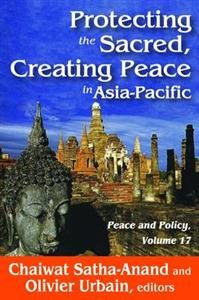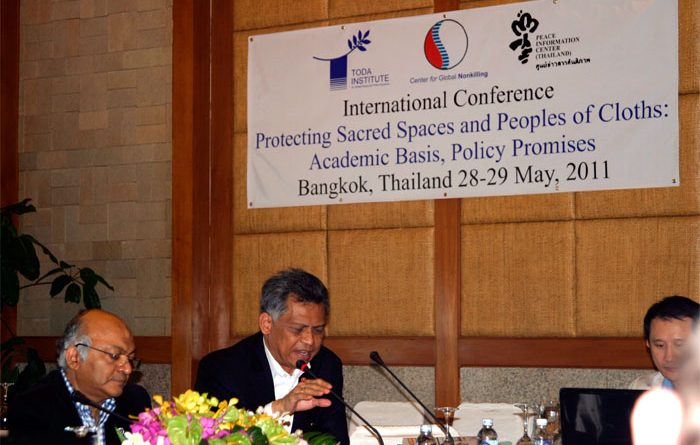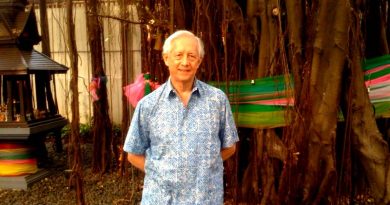“Protecting the Sacred” Book Launched
“Protecting the Sacred, Creating Peace in Asia-Pacific”, edited by Chaiwat Satha-Anand and Olivier Urbain is the first book dealing with this crucial and innovative topic. The volume comes from a conference held by the Toda Institute for Global Peace and Policy Research in collaboration with the Center for Global Nonkilling and the Peace Information Center in Bangkok, Thailand, on May 28-29, 2011, on the theme “Protecting Sacred Spaces and People of the Cloth: Academic Basis, Policy Promises”. With the support of the Berghof Foundation and Open Society Foundation, a group of 55 participants from various regions, including academics, NGO activists, policy makers, embassy representatives, and religious personnel, converged to discuss this topic.

This collective volume seeks to explore the importance of protecting sacred spaces, symbols, and religious people as a crucial element in fostering peace, especially in Asia-Pacific in the context of protracted conflicts that can sometimes turn deadly. In the tradition of critical peace research, it ends with a policy statement that is proposed by the organizations involved and which is presented to the Secretary-General of ASEAN with the hope that some policy suggestions for the protection of sacred spaces, at least in Southeast Asia, could be explored [from the Preface by Olivier Urbain and Introduction by Chaiwat Satha-Anand].
Using case studies from the Middle East, South Asia, Southeast Asia, and the Pacific Basin, this book examines the global trend of violence against religious places and figures. It also addresses the phenomenon of religion becoming a motive or justification for violence. The contributors find attacks on sacred places to be particularly damaging to peace and harmony in many Asian and Pacific societies because of the centrality of religion there. A diverse range of topics are covered, including an empirical exploration of the global trends of violence against sacred spaces; attacks against and policies toward holy sites in Israel and Palestine; the fate of Indian Islamic monuments after India gained independence in 1947; the Christian community’s responseto the increasing Islamization of Malaysia, and the future of communalism in Malaysia. Africa and Australia are also referenced in the work. The book’s penultimate chapter argues that understanding the special role of sacred sites represents a crucial dimension to fully understanding Australia’s history and culture. The book ends by recounting the experiences of JUST International, an organization campaigning for the protection of sacred spaces and religious institutions. Taken together, this volume explores the importance of protecting sacred spaces, holy symbols, and religious people as a crucial element in fostering peace in the world, and especially the Asia-Pacific region. The contributors argue that much violence in the world is rooted in politics of religious identity. Acting in the name of religion, violent perpetrators frequently target religious institutions and symbols, which usually generates further deadly conflicts.
Chaiwat Satha-Anand is a professor of political science at Thammasat University (Bangkok, Thailand). His most recent publications include Imagined Land: The State and Southern Violence in Thailand and Essays on the Three Prophets: Nonviolence, Murder, and Forgiveness.
Olivier Urbain is the director of the Toda Institute for Global Peace and Policy Research. His publications include articles about the power of the arts for peace, a book, Daisaku Ikeda’s Philosophy of Peace, as well as the editing of Music and Conflict Transformation.




